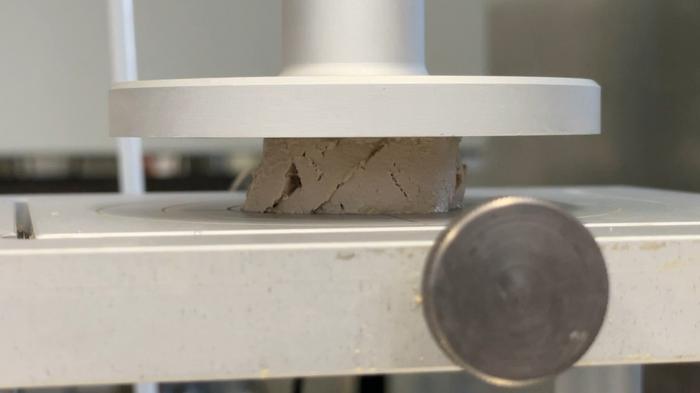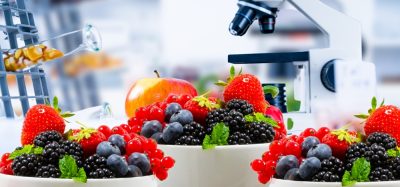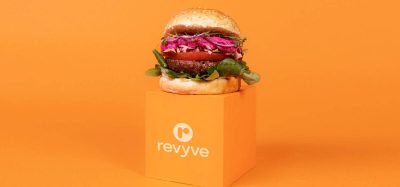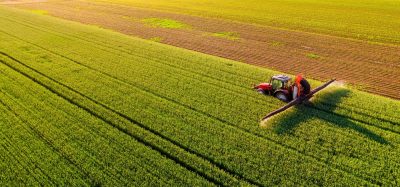Scientists create animal-friendly foie gras that mimics the real thing
- Like
- Digg
- Del
- Tumblr
- VKontakte
- Buffer
- Love This
- Odnoklassniki
- Meneame
- Blogger
- Amazon
- Yahoo Mail
- Gmail
- AOL
- Newsvine
- HackerNews
- Evernote
- MySpace
- Mail.ru
- Viadeo
- Line
- Comments
- Yummly
- SMS
- Viber
- Telegram
- Subscribe
- Skype
- Facebook Messenger
- Kakao
- LiveJournal
- Yammer
- Edgar
- Fintel
- Mix
- Instapaper
- Copy Link
Posted: 28 March 2025 | Ben Cornwell | No comments yet
Scientists have developed an animal-free foie gras alternative that replicates the traditional delicacy while addressing long-standing ethical concerns.


A stress test of the researchers’ foie gras pâté. Image Credit: Thomas A. Vilgis
Researchers from the Max Planck Institute for Polymer Research (MPI-P) in Mainz, led by Thomas Vilgis and University of Southern Denmark, has brought the controversial luxury dish foie gras a step closer to being produced without harm to animals.
Foie gras, which translates as “fatty liver” in French, has long been the subject of animal welfare debates. In many countries, including the UK, its production is banned due to the “force feeding” process used to fatten geese or ducks for their livers. Despite the growing demand for ethical food alternatives, no substitute has been able to replicate the delicate mouthfeel of foie gras, until now.
In a study, published in Physics of Fluids, the team outlined a process for creating a plant-based alternative that replicates the unique taste and texture of traditional foie gras while eliminating the ethical concerns surrounding its production. According to Vilgis, a passionate foie gras enthusiast himself, the project stemmed from his desire to create a more animal-friendly version of the dish.
He explained:
It was always a dream to make foie gras more accessible and better for animal welfare. It’s good to stop these force-feeding practices — or at least reduce them.”
Process centred around lipases
The process centres around using the bird’s own natural enzymes, known as lipases, to treat the fat rather than adding external ingredients or additives. Lipases, which naturally occur in the duck’s body to help digest fat, are used to mimic the activities that happen inside the bird, turning the fat into large crystals similar to those found in traditional foie gras.
At the heart of the method is simplicity: the liver and fat are harvested from the bird, the fat is treated with lipases, and then the mixture is sterilised. The result is a product that looks, smells and even feels like the original foie gras, but without the controversial practices.
Vilgis added:
We could really see that the influence of these large fat particles, which we call in the paper percolating clusters. At the beginning of the ‘bite,’ these large clusters have a high resistance, creating a similar mouthfeel of elasticity without being too rubbery as after the collagen or gelatin addition.”
Tests on the product showed it had a similar mouthfeel and mechanical properties to the traditional version, a significant step in confirming the success of the technique.
Next steps
Vilgis has already filed a patent for the process and is now seeking partnerships with companies to scale up production. He also hopes to collaborate with sensory scientists to refine the flavour and aroma further.
He concluded:
Everything in our process is controlled, which is a positive thing. We never considered adding anything additional to the foie gras, because we wanted pure duck — nothing else.”
This new method could pave the way for more ethical foie gras production, offering an indulgent yet compassionate alternative for food lovers.
Related topics
Alternative Proteins, Cultured Meat, Plant based, Proteins & alternative proteins, Sustainability
Related organisations
Max Planck Institute for Polymer Research, University of Southern Denmark









